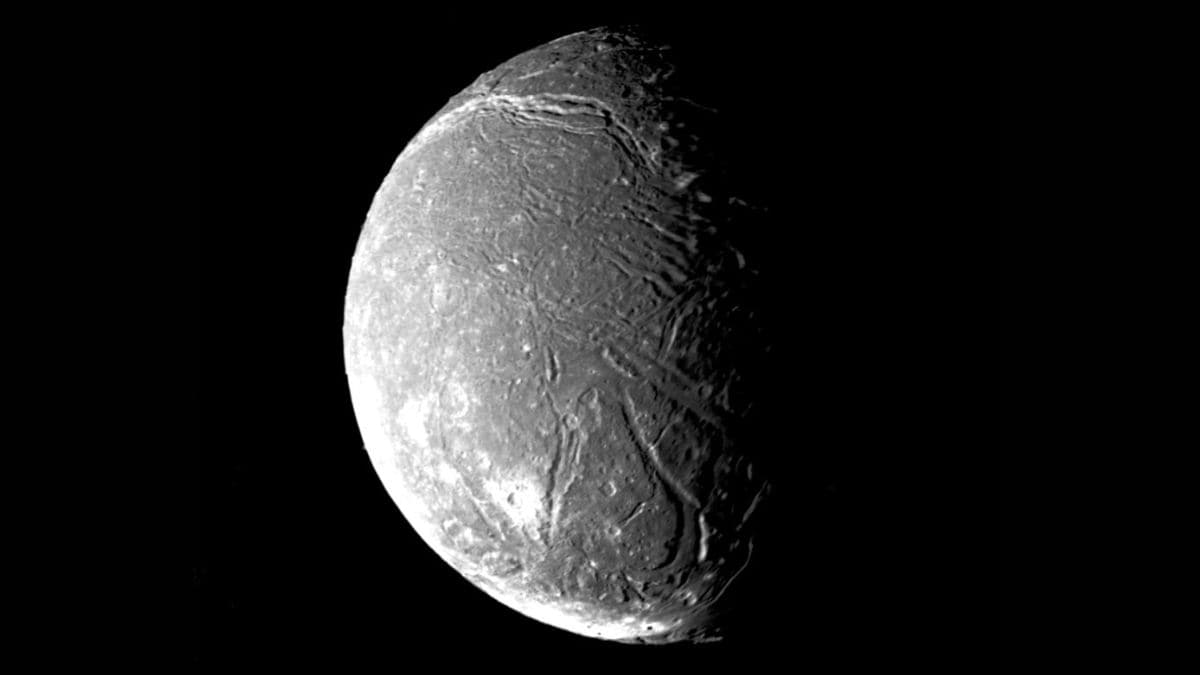Recent observations from the James Webb Space Telescope (JWST) suggest that Ariel, one of Uranus’s moons, might harbour an underground liquid ocean. Ariel is one of the 27 moons orbiting Uranus, the seventh planet from the Sun. The discovery was made during a 21-hour observation period as part of the “Moons of Uranus” project. The focus was on detecting signs of water, ammonia, and organic molecules, as well as carbon dioxide ice.
Carbon Dioxide and Carbon Monoxide Detected
Unexpectedly, JWST found carbon dioxide ice on Ariel, despite its distance from the sun where such ice would typically turn to gas. This ice is mainly located on the side of the moon facing away from its orbital direction. The presence of carbon monoxide, detected for the first time on Ariel, adds to the intrigue. Carbon monoxide is typically stable only at extremely low temperatures, much lower than Ariel’s average surface temperature of around 65 degrees Fahrenheit.
Implications for Lunar Geology and Future Missions
The researchers propose that the carbon dioxide ice might originate from an underground ocean, with the ice escaping through cracks in the moon’s surface. Another possibility is that radiation from Uranus’s magnetic field could be breaking down molecules, creating the observed ice. The study also hints at the presence of carbonates on Ariel’s surface—minerals formed when water interacts with rock. This could suggest a geologically active interior capable of sustaining a subsurface ocean.
The findings have sparked interest in a potential mission to Uranus. The Uranus Orbiter and Probe (UOP) concept, a proposed NASA mission, could provide more detailed data. With launch opportunities in the early 2030s and the need for a gravity assist from Jupiter, timely action is crucial to make this mission a reality.
In conclusion, the James Webb Space Telescope’s observations of Ariel suggest the presence of an ancient or ongoing underground ocean, presenting exciting opportunities for future exploration of Uranus and its moons.










